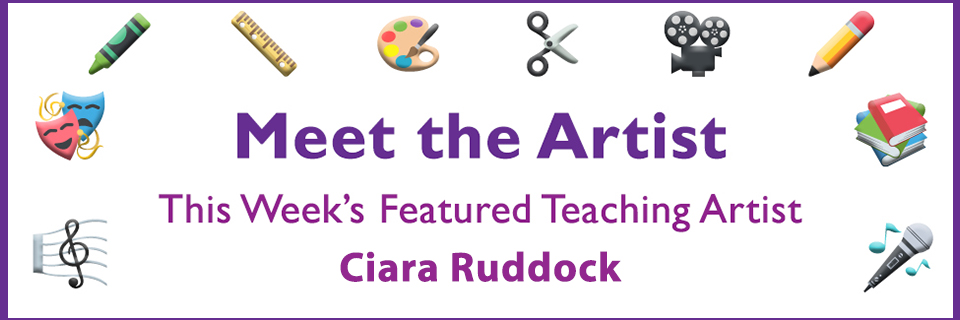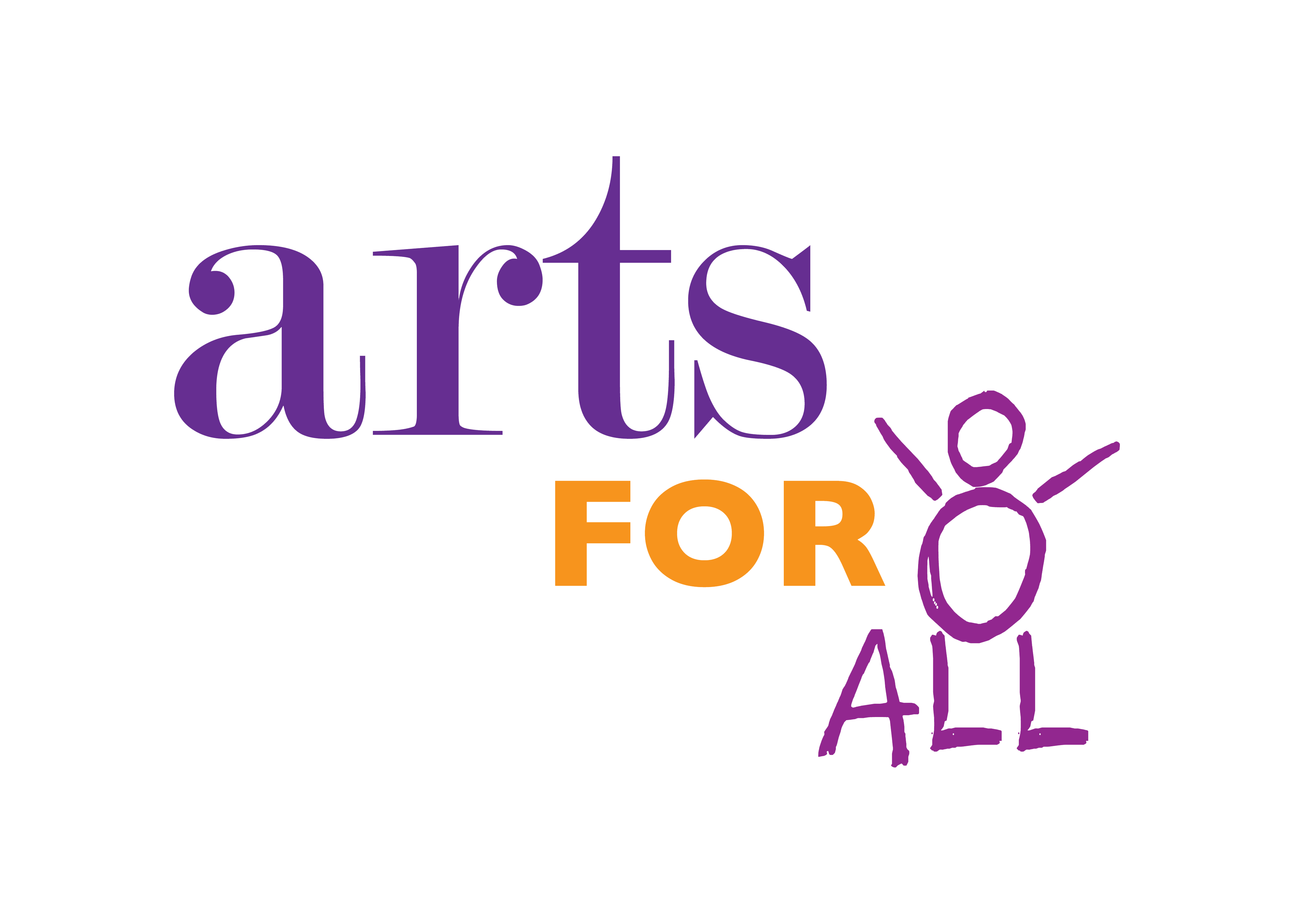
Interview by AFA Intern McKenna Dixon in Fall 2022
Q: Who are you?
Ciara: My name is Ciara, I grew up in the Bay Area, went to school in France, and now I’ve been in New York for almost ten years. I consider myself a Social Practice Artist, meaning that my work is reliant upon work that I make with the community, whether that’s teaching or collaborative art-making. With Arts For All, I have done a lot of Literacy Through the Arts work, and I’m starting to bring in socially, emotionally informed curriculum in the arts.
Q: How did you first get involved in your specific discipline of art?
Ciara: I was a resident artist with Project Art, which is a social practice artist residency program. Artists are placed in different libraries throughout New York City, and that becomes your studio space. The program essentially requires that you conduct two community workshops per week that are directly informed by whatever your practice is, so that introduced me to what it looks like to maintain a personal practice but bring it back into the community in some way.
Q: What role did the arts play in your upbringing?
Ciara: I grew up in a place where we didn’t have funding for the arts, so I didn’t really have arts programs in school, but my family and community were very supportive of play and imagination. I think that part of my imagination is still very important to me today, especially with storytelling and connecting with other people through art.
Q: What is your educational background?
Ciara: I started off going to school for science and turned to art because it brought me joy. When I moved back to New York from grad school, I didn’t really know what a career in the arts looked like, but I’d worked with young people before in California and knew that was something important to me. I also worked at a museum, and connecting with other artists led me to the career of teaching artistry. It gave me the freedom to bring my own perspective on art to the classroom.
Q: Did you experience a particular “aha moment” in which you realized art and teaching artistry was your passion?
Ciara: Definitely. I think that, for a long time, for the past few years, I treated art and teaching separately. I considered myself an artist in some moments and a teaching artist in other moments. I took a break from teaching last year to go into social work, and in stepping away, I realized that so much of my personal practice of painting was informed by the interactions that I had with other people, mostly young people. Being around them and encouraging them to use their imagination was inherently also giving me a space to tap into my imagination. And a big part of my art-making process is using my inner child and being playful when I’m painting. I realized that, without being in the classroom, I could do it, but it was harder to find that specific creativity.
Q: How do the children you work with inspire you to continue being a teaching artist?
Ciara: Because of my own circumstances as a kid, the moments where I’m with a student and I see them light up when they’re making something—whether it’s something as simple as drawing a picture or giving a student a paintbrush for their first time—I feel so grateful to be in a position where I can introduce new modes of making to students that might not otherwise have that opportunity. In those moments of watching them find their peace, it reminds me of how important art is and how powerful sharing that with people is. Being able to teach people how to communicate in a way that’s not just words is what reminds me why I make my own art and how important it is to share that with the community.
Q: What is one of the main takeaways you hope the students gain from your classes?
Ciara: My hope is that they learn how to access what’s inside of them. In the program that I’m doing now with Arts For All—Social and Emotional Awareness—my aim is to not only give students access to different techniques, but more so to have them walk away from our classes realizing that art can be a coping strategy, or learning something new about themselves.
Q: What drew you to Arts For All? What are you most looking forward to this year?
Ciara: What I’ve always liked about Arts For All from the very beginning is how small it is. Over the years I have developed such a strong relationship with those developing the programs, like Anna. I feel comfortable to send an email with an idea or to reach out for support. What’s kept me drawn to Arts For All is that they really do respect the ideas that their artists bring. They don’t just do so by encouraging me, but by giving me the opportunity to try new things. This year, I am really looking forward to doing a program at a school in Crown Heights where I teach social and emotional learning through the arts. I teach students how to not only name the feelings that they are experiencing, but also how to relate to other people and support them, all through art-making.
Q: What does art mean to you?
Ciara: Art, to me, is first and foremost a human right. I think that it’s something that is within all of us, and whether or not we know how to access that, it is a natural part of all humans’ existence. Beyond that, it is purely a form of expression and communication. It’s a different language, essentially. In my paintings, for example, I am telling you things about myself and my life that I can’t communicate to you in any other way.
